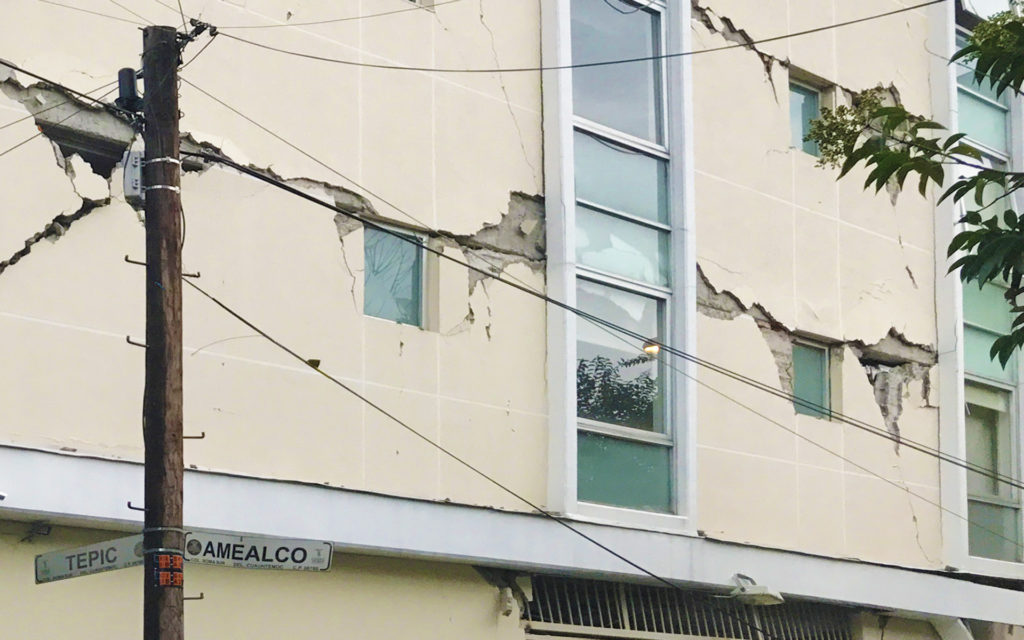We started the day by meeting over breakfast. We discussed and mapped the locations throughout the City that Team 1 had already visited and annotated information related to ground motions and critical facilities on the map. Next we started to conduct earthquake reconnaissance through the La Condesa neighborhood. This area of town consists mostly of low-rise (2-6 story) residential construction with ground floor commercial spaces, such as restaurants and shops. The typical construction for these types of buildings is confined masonry bearing and lateral walls.

Throughout this neighborhood we saw many damaged buildings. Many of these buildings are inherently vulnerable to earthquakes due to their type of construction and the soft lakebed soils that support them. By walking through the neighborhood, you really get a sense for how seemingly random the damage can be to buildings. Sometimes, on the same block, one building would be damaged while another that is of similar construction would be undamaged. It is incredible how the unique geography of sitting on reclaimed lakebed dramatically affects how earthquakes affect Mexico City’s structures. This seemingly inconsistent damage between similar buildings must be particularly distressing to the citizens who must now grieve and recover from the earthquake.
We also observed two hospitals. From the outside, these hospitals seemed to have relatively little damage. However, we were not allowed to enter either due to tight security. Both hospitals were at least partially operational. The first hospital experienced some cladding damage at re-entrant corners and one of these heavy panels had even fallen off the building. The second hospital experienced some building rotation and foundation settlement in one of the wings of the building. There was minimal other exterior damage although one end the building had settled approximately 6” compared to the adjacent wing of the hospital.
We ended the day by walking down Calle Baja California. This highly trafficked street also happened to have many taller 6-12 story buildings on it. Many of the buildings along this street had dramatic earthquake damage, including windows that had broken, fallen off the building, and showered down on the sidewalks below. Many of the building shear walls also had large shear cracks that extended most of the way through the wall, meaning that their remaining capacity to support the building’s normal loads is very small.
Stay tuned for daily updates from our team… and if you have questions about our efforts, please comment below and we will respond with an answer.


